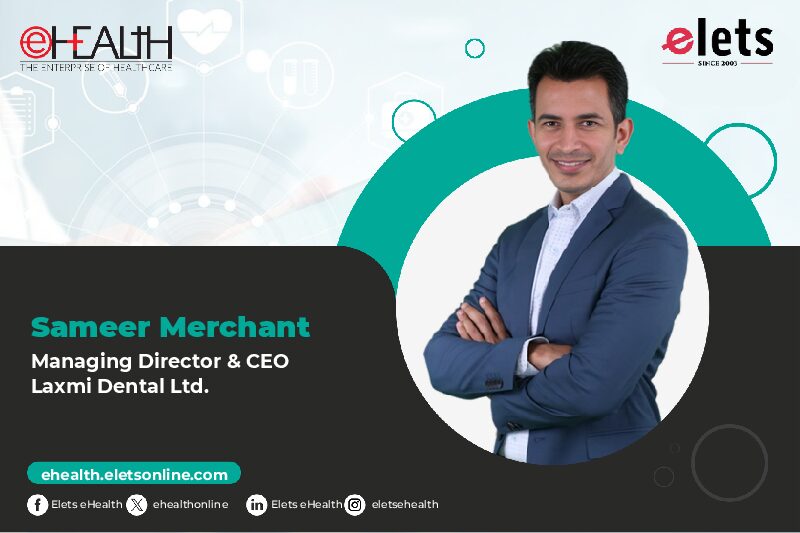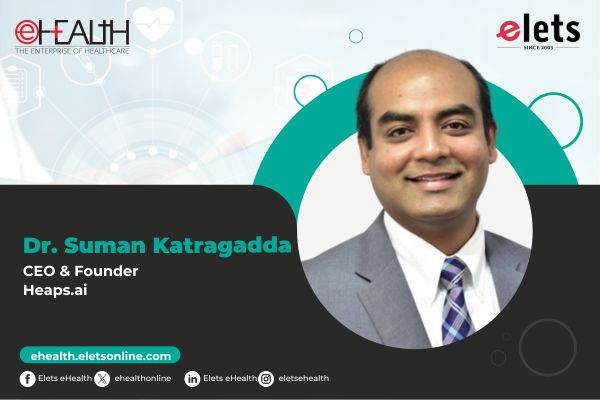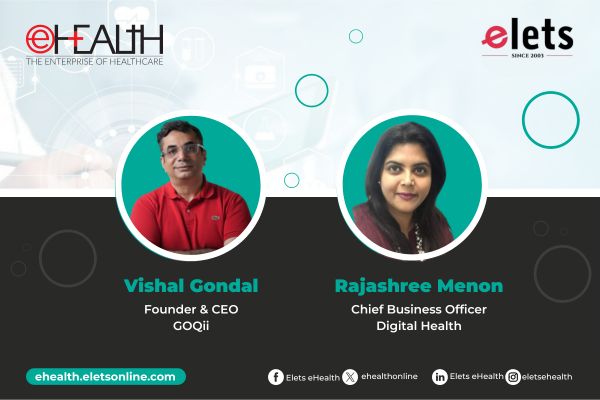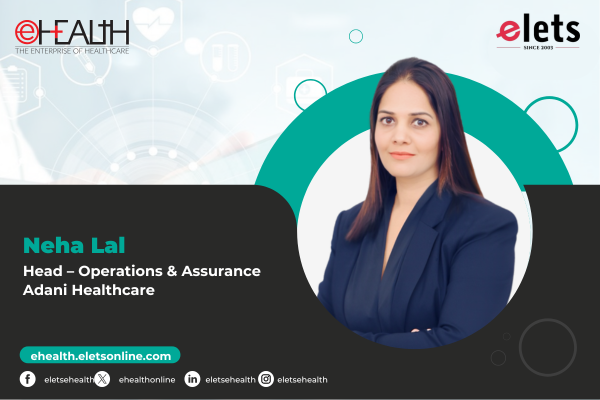
The need for innovation and technology-driven transformations has become integral for healthcare to reach the masses. Technology holds the potential to be the key enabler in promoting and utilising agile innovations to fill the existing gaps in the healthcare sector. Recognising this need, Elets Technomedia and eHealth Magazine organised the 10th Elets Healthcare Innovation Summit on 22-23 June 2022 in New Delhi that saw enthused participation from a cross section of policy makers, industry leaders and solution providers. Edited excerpts from the conference sessions.
Digital Transformation- The CIO Perspective

Dr Susil Kumar Meher, Head Health- IT, AIIMS stated, “IT was implemented in the year 1988. At that point it was very challenging to convince users to operate computers. In 1999, the government initiated telemedicine facilities in India and gave four institutions for telemedicine consultations through satellites. That journey was the transformation where virtual consultation stood through telemedicine facilities. Digital transformations made us acknowledge that virtual consultations can be accomplished through telemedicine facilities.”
1988. At that point it was very challenging to convince users to operate computers. In 1999, the government initiated telemedicine facilities in India and gave four institutions for telemedicine consultations through satellites. That journey was the transformation where virtual consultation stood through telemedicine facilities. Digital transformations made us acknowledge that virtual consultations can be accomplished through telemedicine facilities.”

He further elaborated that at the initial level it was difficult for people to embrace telemedicine because without a physical visit treatment was not possible for the patients as well as for the doctors. But in some exceptional cases, patients were ready to take remote consultations and prescriptions. Today, the culture has changed and the pandemic has taught us much about digital transformation.

Himanshu Rastogi, Chief Technology Officer, Medi Assist Healthcare Services Limited shared, “The biggest challenge that we encountered during Covid was for our workforce. We were predominantly a floor managed organisation but people started working remotely. So the collaboration was a big challenge for us.
shared, “The biggest challenge that we encountered during Covid was for our workforce. We were predominantly a floor managed organisation but people started working remotely. So the collaboration was a big challenge for us.

He further added that purchasing of tools was easier, but training them and getting them accustomed to new things was a big challenge for them. The good thing was that now our workforce knows how to work from any location.
He further added, “We had the technology but covid just accelerated its adoption. The biggest challenge for us in the coming years would be holding up to the numbers. We are working towards digitising the bills. But there is no industry standard as of now, so we are just digitising it.”
Arun Goyal, Chief Information Officer, Sir Ganga Ram Hospital expressed, “The pandemic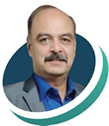 allowed us to adopt digital transformation in a big way. We achieved digital acceleration, particularly in the healthcare arena. Patients, doctors, clinicians, and everybody nowadays is adopting the online transformation system. We are now into the next phase of it.”
allowed us to adopt digital transformation in a big way. We achieved digital acceleration, particularly in the healthcare arena. Patients, doctors, clinicians, and everybody nowadays is adopting the online transformation system. We are now into the next phase of it.”
They came up with a lot of process transformations during covid wherein they introduced touchless receipts, touchless prescriptions, and digital copies of records into the hospitals which they still follow. This accelerated the digital journey of the hospital.
He further added, “We integrated telemedicine with our HIS, where we have an online appointment system; Patients are adopting it and clinicians are also comfortable giving the consultation and prescriptions online. We have integrated with the pharmacies so that the patient does not get a pharmacy issue during the digital consultation, which got accelerated and the credit goes to the pandemic.”
Additionally, he said, “Things are coming back to normal but would appreciate telemedicine for becoming a part of our day-to-day routine, and some good practices like e-prescriptions and e-pharmacy have been adopted by the patients and so by the system.”
Rajiv Sikka, Chief Information Officer, Medanta Medicity stated, “In a hospital, there are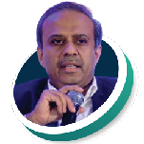 multiple stakeholders – there are physicians, lab doctors, radiologists, nurses, technicians, and many more. And the patient is at the core everywhere.”
multiple stakeholders – there are physicians, lab doctors, radiologists, nurses, technicians, and many more. And the patient is at the core everywhere.”
He shared that three distinct waves came into Covid. Along with that, there were three phases for CIOs too. The first phase was to ensure that things worked smoothly by getting things connected between different hospitals. The second phase was concerned with making things happen and ensuring they make it a part of their institutional journey. And finally, in the last phase, they decided to take their initiative in the form of a structured approach, that is to make it a part of their 3-5-year-old map.
He further added, “No country irrespective of western countries or India was in a position to handle patients because there were no beds. And the only way we were able to support or manage the situation in the country was by going digital. In this way, we treated many patients without them coming to the hospital. Covid has taught us that future care will be away from the hospital.”
Healthcare data is very precious so it must be protected and it should be available when doctors attempt to approach it.
J P Dwivedi, Chief Information Officer, Rajiv Gandhi Cancer Institute & Research Center (RGCIRC) articulated, “Covid affected different stakeholders. The impact of covid firstly affected the CIO, then patients, and then doctors in adapting to digital transformation.”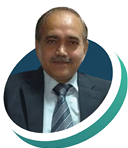
People needed care and wanted to consult doctors desperately. Then, telemedicine came as a matter of urgency. They made their app through HIS partners so that the common database is always available to doctors. Patients were scared and they wanted a facility to consult doctors from home, so telemedicine became paramount, whereas doctors were not happy to adopt online health records because their applications were not friendly enough.
Healthcare data is very precious so it must be protected and it should be available when doctors attempt to approach it. Performance and security were the two areas of prime focus.
He further stated, “We divided the entire skill set into two core technical, making a hybrid team with the suppliers, and techno functional that changes the role of different modules so that one person can support more than one module and then created IT champions within the user department. They are also able to play a function or business analyst alongside our team and that is helping us manage the situation.”
Innovative technologies for futuristic healthcare
Manisha Kumar, Chief Operating Officer, HCG Hospitals stated that in the last decade, there has been an entry of a lot of technology intervention enablements in healthcare delivery such as teleconsultations, virtual consultations, telemedicine, teleradiology, but the adoption has been reluctant. “During covid, we have seen an enormous disruption, especially in healthcare delivery. Doctors and patients adopted digital technologies and overcame the disruption by providing virtual consultations or teleconsultations. Providers, Practitioners, Patients & Peers are the four Ps of healthcare”, she expressed.
there has been an entry of a lot of technology intervention enablements in healthcare delivery such as teleconsultations, virtual consultations, telemedicine, teleradiology, but the adoption has been reluctant. “During covid, we have seen an enormous disruption, especially in healthcare delivery. Doctors and patients adopted digital technologies and overcame the disruption by providing virtual consultations or teleconsultations. Providers, Practitioners, Patients & Peers are the four Ps of healthcare”, she expressed.
She added that e-ICUs, home care quarantine, and artificial intelligence were the three concepts that were brought up and evolved by people digitally. “Covid has been a proof of concept where we have seen the entire outpatient ecosystem migrating digitally and becoming accessible to the patient in a digital format,” she concluded.
The future of healthcare is at home because the primordial focus is going on preventive wellness, it’s from cure to care. The senior care or the home healthcare market grew at a compound interest rate of almost 19.5 per cent in 2021, stated Dr Charu Dutt Arora, Founder Member, and Head Consultant, Asian Institute of Medical Science. With the augmentation of the AI big data and machine learning software it becomes more seamless and kind of proactive rather than less reactive. The attitude of the physicians needs to be changed. They are still very reluctant to use telehealth services and in understanding the knowledge attitude. The practice of telehealth is still at a very very premature stage.
wellness, it’s from cure to care. The senior care or the home healthcare market grew at a compound interest rate of almost 19.5 per cent in 2021, stated Dr Charu Dutt Arora, Founder Member, and Head Consultant, Asian Institute of Medical Science. With the augmentation of the AI big data and machine learning software it becomes more seamless and kind of proactive rather than less reactive. The attitude of the physicians needs to be changed. They are still very reluctant to use telehealth services and in understanding the knowledge attitude. The practice of telehealth is still at a very very premature stage.
He further added, “The number of doctor visits is going to reduce because people are going to stay at home. There’s so much data that can be inserted into the software and treatment can be done digitally.
He concluded by saying, “Home health care is one of the futures of the healthcare industry and apart from that it can grow only if there’s a complete seamless integration of all the technology and the personnel involved and for that awareness and education are the key factors.”
Suparna Sengupta, Chief Executive Officer, Narayan Memorial Hospital shared, Healthcare has always been a kind of a challenge, and physicians are the main challenge in electronic health records. Arogya Setu has opened a lot of eyes because now the doctors are depending on data. The main challenges of the hospital are coming out from the physicians in the hospital.
has always been a kind of a challenge, and physicians are the main challenge in electronic health records. Arogya Setu has opened a lot of eyes because now the doctors are depending on data. The main challenges of the hospital are coming out from the physicians in the hospital.
It has been observed that nurses get detailed medication of patients rather than consultants because they are in detail. We all need an app-based kind of system as far as electronic health records are concerned. We need to get more into this data management and access to data.
Ayushman Bharat Digital Health Mission (ABDHM) transforming the healthcare spectrum
Dr K Madangopal, Senior Consultant, NITI Aayog stated, “When Ayushman Bharat was launched the approach changed from primary healthcare to comprehensive healthcare. To achieve the same we require certain tweaking to the existing network which has evolved to cater to the population right up from the village level to the medical college level. We need to modify the existing network.”
launched the approach changed from primary healthcare to comprehensive healthcare. To achieve the same we require certain tweaking to the existing network which has evolved to cater to the population right up from the village level to the medical college level. We need to modify the existing network.”
He stated that technology and innovation are the keys to digital innovation. Digital health, mHealth, and other technologies have evolved in the country. In fact, the entire health system has evolved. The private sector claims that they are providing healthcare. “But if we look at the footfalls in the private and public sectors, it is more or less 50 percent while there is more expenditure in the private sector.
70 per cent of the healthcare expenditure happens in the private sector and most of it is financed by out-of-pocket expenses which means 1.4 billion people are chasing around a million healthcare providers for seeking their care,” he added.
The second aspect was to provide secondary and tertiary care services. “We have established a network of institutions but the reach of the people is not there, to bring that we have roped in and started the scheme Ayushman Bharat Pradhan Mantri Jan Arogya Yojana (AB-PMJAY)”, stated Dr K Madangopal.
Technology and innovation are the keys to digital innovation. Digital health, mHealth, and other technologies have evolved in the country.
Arun Goyal, Chief Information Officer, Sir Ganga Ram Hospital shared his insights and expressed, “So far as the data integration is concerned technically, we thought thoroughly and considered security and data privacy, while keeping the patient’s data along with their information at a central place.”
expressed, “So far as the data integration is concerned technically, we thought thoroughly and considered security and data privacy, while keeping the patient’s data along with their information at a central place.”
In the National Digital Health Mission (NDHM) blueprint, we can see that the whole scheme is voluntary and they took it as a segregated interoperable model into the NDHM wherein patient data would be sitting at the respective hospital in the health service provider and no data will be available with the government. The patient’s data privacy has been taken utmost care, without the patient’s consent, their data can’t be shared with any pathology or with any hospital.
He further shared that NDHM has been implemented fully in all the Union Territories and government hospitals. Additionally, he said, “We are the only country which has come up with the patient’s consent model where the patient has been empowered with their data. They give consent to share their data with hospitals and the government has very limited control over it. Patients can store their data at the summer health locker that has already been provided to them by the government.”
Yasin M. Choudhary, Mission Director, National Health Mission, Jammu and Kashmir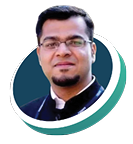 stated, “Whenever anybody thinks of Ayushman Bharat, the first thing that comes to their mind is AB-PMJAY.
stated, “Whenever anybody thinks of Ayushman Bharat, the first thing that comes to their mind is AB-PMJAY.
Ayushman Bharat has evolved itself and it has four pillars namely the Health Insurance Scheme (HIS), Digital Mission, the comprehensive primary health care and health & wellness centers, and Ayushman Bharat Health Mission (ABHM).”
He added, “ABDM is the game changer. It is going to be the biggest disruption in the health sector and we just can’t avoid going digital. The sooner we adopt digital technologies, the more benefits will be coming our way. It is not just another government scheme but is a part of the digital transformation journey.”
Yasin further stated, “In Jammu & Kashmir, our focus is to build HMIS. We are building ABDM compliant from the start so we have a greenfield opportunity and ensuring that we have ABDM complaints. HMIS means that patients and doctors are actively using ABHA ID. This process actively builds digital records.”
He further averred, “When we build something as grand and visionary as ABDM then we build for three things- for universality, robustness, and interoperability”, he concluded.
Technology in Healthcare pushing the Atmanirbhar Bharat Mission
Dr Pankaj Gupta, Head, Taurus Glocal Consulting stated, “We have been working on a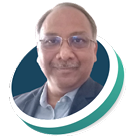 model of health equity at the bottom of the pyramid through open source models on the elastic cloud. The kind of diversity India has, there is only about 5-20 per cent of total bed strength in India. The rest of the 90 per cent is below-bed hospitals. There are no solutions for this segment of the population and hospitals.”
model of health equity at the bottom of the pyramid through open source models on the elastic cloud. The kind of diversity India has, there is only about 5-20 per cent of total bed strength in India. The rest of the 90 per cent is below-bed hospitals. There are no solutions for this segment of the population and hospitals.”
He further stated, “If we bring products from developed countries like the US, South Korea, Australia, it will be difficult for India to adopt it as we’ve been working on a model of health equity at the bottom of the pyramid. The requirements of the public sector are far different from the private sector.”
If a public sector refers the patient to a higher specialist or to the private sector, then it is essential to have a connection between both the public and private sectors. This is what is missing in terms of processors and different technologies.
He further deliberated that they have been working together with the government as well as in the private sector, they have published libraries of open source components that can be used to build products. These products can be sort of bundled in the provider space. It could be for interoperability between primary care, secondary care, and tertiary care or it could be on the health insurance. They call it the health wallet.
During the summit, he also stated, “Recently I ran an accelerator program which has now evolved into a further level where we have about 40 plus startups working to be the early adopters of all these building blocks, (i.e) component libraries in the private as well as the public sector.”
Everyone should be eligible for getting medical facilities irrespective of being poor or rich.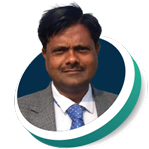 This is the ultimate goal of the Ayushman Bharat Digital Mission, stated Dr Heera Lal, IAS, Additional Mission Director, National Health Mission, Uttar Pradesh, Additional Project Director, Uttar Pradesh State Aids Control Society.
This is the ultimate goal of the Ayushman Bharat Digital Mission, stated Dr Heera Lal, IAS, Additional Mission Director, National Health Mission, Uttar Pradesh, Additional Project Director, Uttar Pradesh State Aids Control Society.
He shared that the medicine must be accessible, affordable, and appropriate. “The whole ecosystem works around 3 C’s (i.e) Connect, Communicate and Cooperate. To achieve these things Ayushman Bharat Digital Mission (ABDM) was launched after testing in Union Territories and was rolled out on September 21, in the country and was inaugurated by our honorable Prime Minister Narendra Modi”, he added.
According to the Press Trust of India (PTI), 22 crores of Ayushman Bharat health accounts have been created so far by the mid of this year and 54,000 health facilities and 12,000 health care professionals were registered.
He expressed, “We need technological changes in the backward areas of our country too.” He also shared that a person should take regular check-ups and must keep themselves healthier and happier, after all ‘Prevention is better than cure.’ This will improve the efficiency and utility of facilities which will help in catering services to a large number of patients. He further expressed that the pandemic had taught each one of us the efficient use of technology.
The whole ecosystem works around 3 C’s (i.e) Connect, Communicate and Cooperate.
Technology has the potential to accelerate access, and enhance equity in coverage of health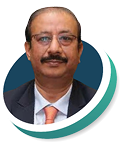 services by reaching the unreached. Technology interventions like IVRS and Telemedicine can improve the efficiency and effectiveness of the healthcare value chain, deliberated Arun Kumar Singh, Additional Chief Secretary (H&FW), Government of Jharkhand.
services by reaching the unreached. Technology interventions like IVRS and Telemedicine can improve the efficiency and effectiveness of the healthcare value chain, deliberated Arun Kumar Singh, Additional Chief Secretary (H&FW), Government of Jharkhand.
Digital health has a profound impact on the delivery of health services. A sustainable healthcare system can be built by balancing the relationship between the medical professionals and the patient, and by providing cheaper, faster, and more effective solutions for diseases.
The ABDM is going to be a game changer since all the data is on one single platform, paving the way for a transparent system. He shared, “In Jharkhand, ASHAs, known as “Sahiyas”, have been supporting delivery of health care services to the last mile. We have empowered 40,000 ASHA workers to take care of healthcare in around 33,000 villages. ASHA workers keep a check on every village household.”
The ASHA workers are empowered through an e-tool under Swasthya Prahari Yojana. Under this project, various health facilities will be provided in rural areas through an app. A Sahiya app will be developed for this purpose.
“We are also coming up with the Mamta Vahan Service for providing the referral transport service to pregnant women”, he shared. India is trying to increase the network and new schemes are being launched to enable the network to reach the rural areas but still, it is a challenge.
Transformation & Innovation driving the online healthcare ecosystem and Reshaping Health Infrastructure
Technology means e-pharmacy, telemedicine, expert opinion, and e-library expressed, Dr Shailesh Jain, Heart Transplant Surgeon & CMD, Universal Hospitals.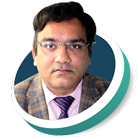
Aatmanirbhar Bharat means healthcare to the poorest of the poor. He delivered the scoop of 5 A’s that are required in the primary, secondary, and tertiary healthcare centers. These are Awareness, Availability, Affordability, Accessibility, and Accountability. “Technology cannot replace physical medical personnel. Though today we have CT scans, MRIs, and other facilities, the best tools for doctors are still stethoscopes and hands. It cannot be replaced by any other technology”, expressed Dr Shailesh.
He expressed, Health is a basic right of our population. “Private health sectors cannot provide healthcare to the poorest of the poor. They can provide healthcare only to the population who can afford it.”
Dr D K Gupta, Chairman, Felix Hospital – “Online systems will reduce the footfall of the hospitals, patients will be benefitted with the access of healthcare system, it will be affordable, and experience will be improved.”
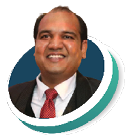 Varun Kansal, Product Head, Medi Assist Healthcare Services Limited – “There are enough opportunities in healthcare. In Medi Assist we are trying to convert knowledge into machines, helping people to choose the right healthcare. We are going forward to make healthcare affordable.”
Varun Kansal, Product Head, Medi Assist Healthcare Services Limited – “There are enough opportunities in healthcare. In Medi Assist we are trying to convert knowledge into machines, helping people to choose the right healthcare. We are going forward to make healthcare affordable.”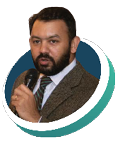
Dr Shailesh Jhawar, Director, Apex Hospitals, Critical Care Hope – “We have to deal with various patients. As technology is coming at a rapid pace, there are lots of challenges that come in our way. The way people adapt, and integrate these challenges is significant.”
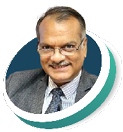 Dr Raja Dutta, Director, Avisa Smart Hospital – “We need to introduce some kind of digital interface. In Avisa Hospital, we focus on the most significant point of patients and ensure that proper care is given to every patient, not only at hospitals but also at home.”
Dr Raja Dutta, Director, Avisa Smart Hospital – “We need to introduce some kind of digital interface. In Avisa Hospital, we focus on the most significant point of patients and ensure that proper care is given to every patient, not only at hospitals but also at home.”
Be a part of Elets Collaborative Initiatives. Join Us for Upcoming Events and explore business opportunities. Like us on Facebook , connect with us on LinkedIn and follow us on Twitter , Instagram.
"Exciting news! Elets technomedia is now on WhatsApp Channels Subscribe today by clicking the link and stay updated with the latest insights!" Click here!








